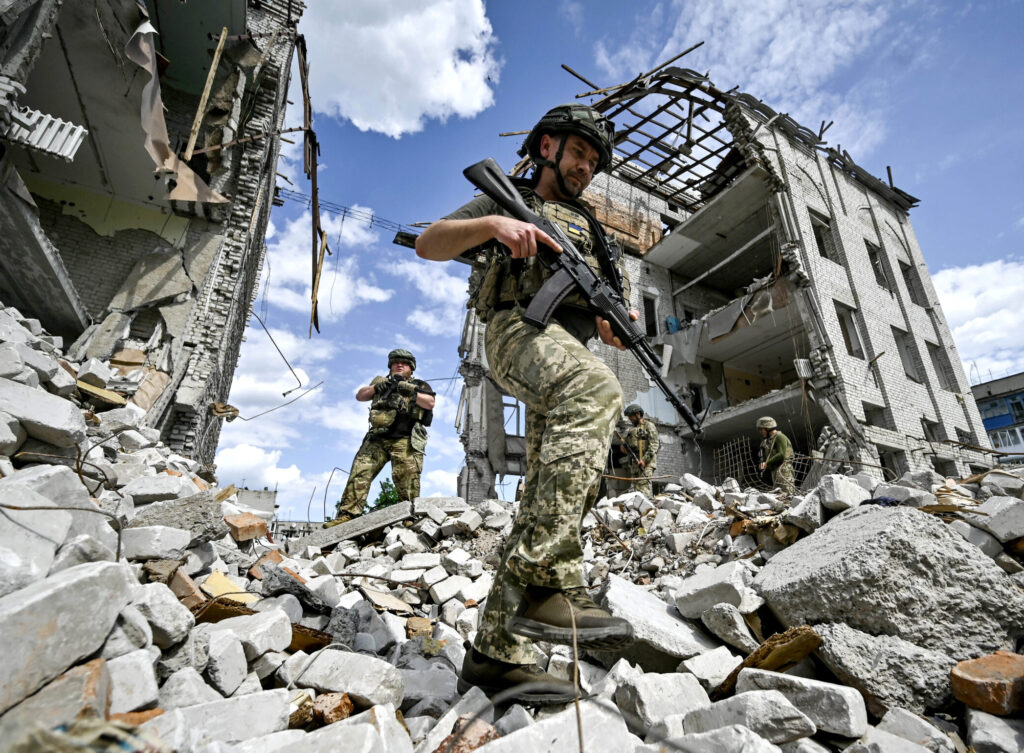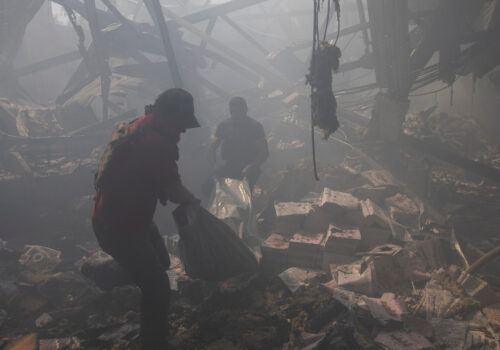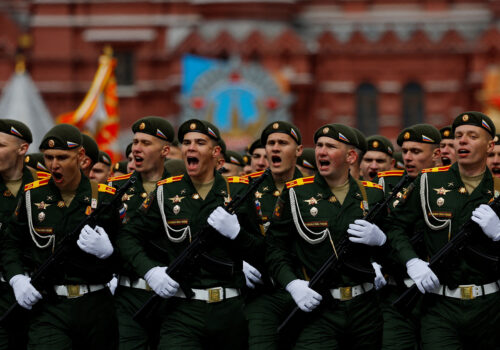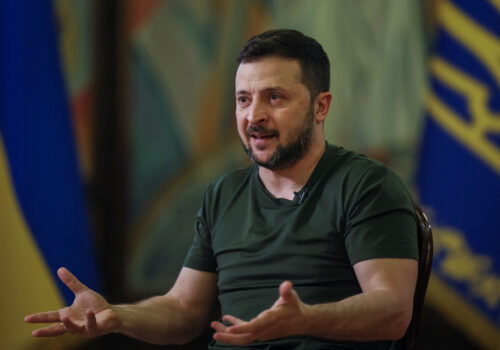Since the start of Russia’s full-scale invasion more than two years ago, most of Ukraine’s international allies have insisted that any weapons they provide be used exclusively within Ukrainian territory. These restrictions were initially imposed to prevent a broadening of the conflict, but a growing chorus of critics now say this approach is preventing Ukraine from defending itself and risks enabling Russian victory.
The debate over the use of Western weapons to attack targets inside Russia has rumbled on throughout the war, and has recently been thrust to the top of the agenda by the Russian army’s latest offensive. In early May, Russian troops crossed Ukraine’s northern border and began advancing toward the country’s second city, Kharkiv. This attack was no surprise; on the contrary, Ukrainian military officials had been monitoring preparations on the other side of the border for weeks, but were powerless to act.
Russia’s Kharkiv offensive has highlighted the military absurdity of current restrictions on the use of the Western weapons supplied to Ukraine. Russian commanders are well aware of Ukraine’s inability to strike back, and are actively exploiting the border zone as a safe haven to concentrate forces and launch bombardments. Understandably, this is fueling calls among Ukraine’s allies for a major rethink.
Stay updated
As the world watches the Russian invasion of Ukraine unfold, UkraineAlert delivers the best Atlantic Council expert insight and analysis on Ukraine twice a week directly to your inbox.
The NATO Parliamentary Assembly is the latest international organization to voice its support for an end to restrictions on Ukraine’s use of Western weapons. Lawmakers from all 32 NATO states adopted a declaration on May 27 urging alliance members to allow strikes on military targets inside Russia. “Ukraine can only defend itself if it can attack Russia’s supply lines and Russian bases of operation. It is time to recognize this reality and let Ukraine do what it must,” stated NATO Parliamentary Assembly President Michal Szczerba.
This declaration echoed NATO Secretary-General Jens Stoltenburg’s May 24 interview with Britain’s The Economist calling on NATO allies to end their prohibition on the use of Western weapons against Russian targets. “The time has come for allies to consider whether they should lift some of the restrictions they have put on the use of weapons they have donated to Ukraine,” commented Stoltenberg. “Especially now when a lot of the fighting is going on in Kharkiv, close to the border, to deny Ukraine the possibility of using these weapons against legitimate military targets on Russian territory makes it very hard for them to defend themselves.”
A number of senior Western officials have also recently backed an end to restrictions. During an early May visit to Kyiv, UK Foreign Secretary David Cameron announced that Ukraine had the “right” to use British-supplied weapons for attacks inside Russia. Speaking in Germany on May 27, French President Emmanuel Macron noted that Ukraine was being attacked from Russia. “We must allow them to take out the military sites the missiles are fired from,” he commented. The following day, Dutch Defense Minister Kajsa Ollongren said the present ban was forcing Ukraine to fight “with one hand tied behind its back” and argued that lifting restrictions “should not be subject to debate.”
Eurasia Center events

Not everyone is convinced. For now, the Biden administration remains unwilling to revise its position limiting the use of US weapons. Meanwhile, a number of European countries including Germany and Italy have also called for caution. This reluctance to escalate the existing confrontation with Russia was on display in Brussels on Tuesday, when Belgian Prime Minister Alexander De Croo announced plans to provide Ukraine with thirty F-16 fighter jets, but informed visiting Ukrainian President Volodymyr Zelenskyy that the planes were not to be used inside Russia.
Russian President Vladimir Putin has responded to mounting talk of an end to Western restrictions on attacks inside Russia by warning of “serious consequences” and hinting at a possible nuclear response. “If these serious consequences occur in Europe, how will the United States behave, bearing in mind our parity in the field of strategic weapons,” he commented in Tashkent this week. “Do they want a global conflict?”
Putin’s nuclear threats are nothing new, of course. Since the start of the Ukraine invasion, he has made numerous thinly-veiled references to nuclear escalation as part of efforts to intimidate the West and reduce the flow of weapons to Ukraine. These nuclear blackmail tactics have proved highly effective, encouraging Western leaders to embrace policies of escalation management that have significantly undermined the international response to Russia’s invasion.
The Kremlin dictator is now clearly hoping the same approach can deter the US and other key allies from giving Ukraine the green light to strike Russia using Western weapons. If he succeeds in this latest act of nuclear intimidation, it will bring Russian victory in Ukraine closer and set a dangerous precedent for the future of international security.
Peter Dickinson is editor of the Atlantic Council’s UkraineAlert service.
Further reading
The views expressed in UkraineAlert are solely those of the authors and do not necessarily reflect the views of the Atlantic Council, its staff, or its supporters.

The Eurasia Center’s mission is to enhance transatlantic cooperation in promoting stability, democratic values and prosperity in Eurasia, from Eastern Europe and Turkey in the West to the Caucasus, Russia and Central Asia in the East.
Follow us on social media
and support our work
Image: A fighter of the 53rd Battalion of the 141st Separate Infantry Brigade is serving in the Zaporizhzhia region, Ukraine, on May 20, 2024. (Photo by Ukrinform/NurPhoto)




